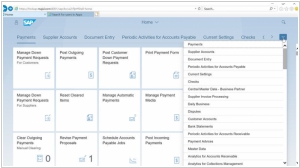IBM Netezza vs SAP HANA
May 26, 2023 | Author: Michael Stromann
2
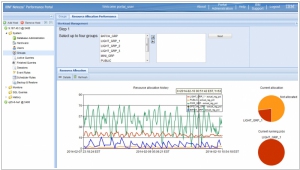
IBM Netezza appliances - expert integrated systems with built in expertise, integration by design and a simplified user experience. With simple deployment, out-of-the-box optimization, no tuning and minimal on-going maintenance, the IBM PureData System for Analytics has the industry’s fastest time-to-value and lowest total-cost-of-ownership.
IBM Netezza and SAP HANA are both popular database management systems used for data analytics, but they have distinct differences in their architectures and capabilities.
IBM Netezza is an appliance-based data warehouse solution designed for high-performance analytics. It uses a massively parallel processing (MPP) architecture that allows for fast data loading, complex queries, and concurrent analytics. Netezza is known for its simplicity and ease of use, offering built-in analytics functions and a user-friendly interface.
SAP HANA, on the other hand, is an in-memory computing platform that combines a database, advanced analytics, and application development capabilities. HANA stores data in memory for faster processing, enabling real-time analysis and reporting. It supports both structured and unstructured data and provides advanced analytics functions, machine learning capabilities, and integration with SAP's ecosystem of applications.
See also: Top 10 Big Data platforms
IBM Netezza is an appliance-based data warehouse solution designed for high-performance analytics. It uses a massively parallel processing (MPP) architecture that allows for fast data loading, complex queries, and concurrent analytics. Netezza is known for its simplicity and ease of use, offering built-in analytics functions and a user-friendly interface.
SAP HANA, on the other hand, is an in-memory computing platform that combines a database, advanced analytics, and application development capabilities. HANA stores data in memory for faster processing, enabling real-time analysis and reporting. It supports both structured and unstructured data and provides advanced analytics functions, machine learning capabilities, and integration with SAP's ecosystem of applications.
See also: Top 10 Big Data platforms
IBM Netezza vs SAP HANA in our news:
2014. IBM adds Netezza analytics as a service to its cloud
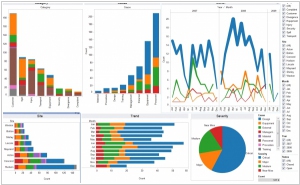
IBM has unveiled a range of new cloud data services for IBM Cloud, expanding its offerings with several innovative tools. These additions include DataWorks, an intelligent data-preparation tool, dashDB, an in-memory analytic database powered by Netezza, and a localized version of the cloud-based database Cloudant. This comprehensive set of capabilities showcases IBM's commitment to enhancing its Bluemix platform. Notably, dashDB positions IBM alongside industry giants like Amazon Web Services, Google, and Microsoft, as it introduces its own analytic service built on columnar database technology, further solidifying its presence in this domain.
2014. The Netezza team is back with Big Data startup Cazena
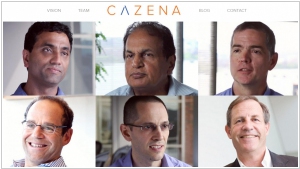
The recently launched startup Cazena, which secured $8 million in funding, aims to streamline big data processes for large enterprises. Leveraging the expertise of its founding team, who previously worked on the data warehouse specialist Netezza (acquired by IBM in 2010), Cazena is well-positioned to deliver on its promise. Prat Moghe, the CEO of Cazena and former senior vice president at Netezza, is supported by Netezza founder Jit Saxena and longtime Netezza CEO Jim Baum, who both serve on Cazena's board. Cazena recognizes that many large companies face challenges in understanding the necessary technologies for deployment. The complexities surrounding Hadoop, NoSQL, Spark, and Elasticsearch often leave them unsure of when and where to utilize these tools. Moreover, transforming these technologies into a functional "data lake," as advocated by some vendors, proves daunting for these companies. Cazena's approach aims to shift the focus from infrastructure to applications, simplifying the big data landscape. To achieve this, Cazena plans to leverage cloud technology.
2014. SAP and IBM partner to provide SAP HANA on IBM Cloud
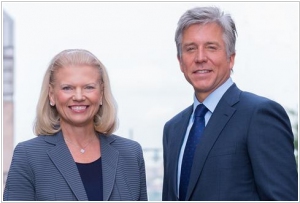
The software giants SAP and IBM have joined hands and announced the availability of the HANA Enterprise Cloud service, a Big Data platform, through IBM's cloud infrastructure. SAP CEO Bill McDermott acknowledged the immense demand for SAP HANA in the cloud and described the global agreement with IBM as marking a new era of cloud collaboration. IBM CEO Ginni Rometty highlighted this as a significant milestone in the deployment of enterprise cloud, emphasizing that IBM's secure, open, and hybrid enterprise cloud platform will enable SAP clients to embrace new ways of working in an era shaped by big data, mobile, and social advancements.
2014. SAP: Germany won the World Cup thanks to Big Data
In the not-too-distant past, the Oracle yacht emerged victorious in the America's Cup. Subsequently, Oracle marketers attributed this achievement to the utilization of Oracle's Big Data system. Now, it's SAP's turn (Oracle's perennial rival) to respond to this marketing claim. As it turns out, the German football team's triumph in the World Cup can also be attributed to a Big Data system called SAP Match Insights, which operates on the innovative SAP HANA technology. This system synchronized data from scouts with video footage captured on the field, enabling coaches to easily identify crucial moments during the game. By leveraging SAP Match Insights and SAP HANA, the coaches of the German National Team simplified their training methods and improved performance, thereby enhancing the beauty of the sport for fans worldwide. This story serves as a reminder of the transformative potential of Big Data for businesses.
2013. SAP makes big companies effective with Big Data. Competitors are crying
In recent years, SAP was probably the least innovative IT giant (compared to competitors Oracle, Microsoft, IBM). All SAP's own innovative projects mostly failed (remember Business ByDesign), and the only thing that SAP could do - is buying other companies (SuccessFactors, SyBase, Ariba). But at this time, SAP is going to outdo all the competitors on the wave of new trendy technology - Big Data. What is Big Data? ***

